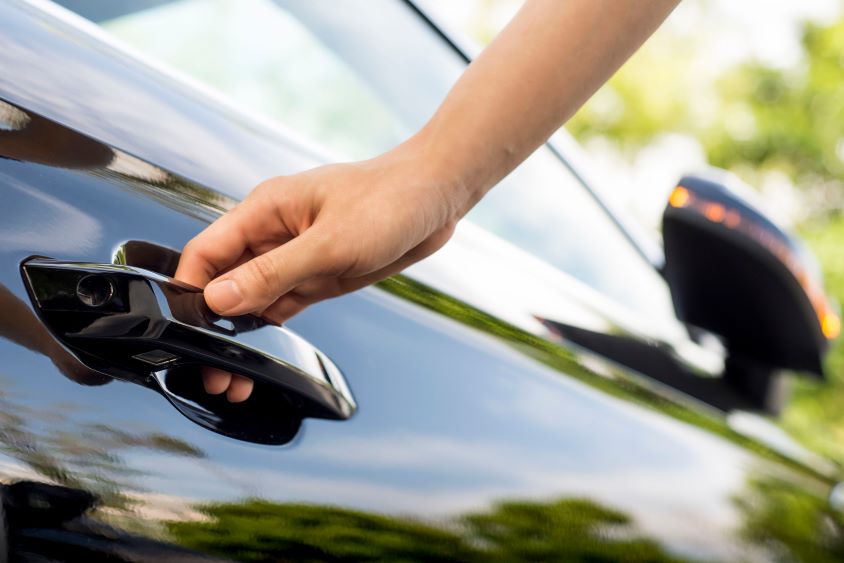Prevent yourself from being a victim of keyless car theft
Written by: Simon Pavey, Last updated:17th September 2021

An increase in vehicle crime earlier this year has been attributed to a rise of keyless car theft. Figures from the National Police Chiefs’ Council show that there was a 3.1% increase in vehicle related crime in May and June of 2021.
Car theft has been much lower than it was in the 1990s, which saw 36 of every 1000 car owning households being a victim of vehicle related crime.
So how are thieves exploiting this new technology, and could your vehicles be at risk?
What is keyless entry?
Whilst cars still need keys (in some form) to open, they no longer need to be inserted into the car, or have their button pushed. Keyless entry means that there is less fumbling around trying to find your keys in your bag or pocket.
When you put your hand on the handle, the car will send out a signal. That signal will be received by your keys and sent back, telling the car it is safe to unlock. As long as your keys are on your person or in your bag, they will have no issue sending the signal to your car.
The same goes for ignition. Many cars simply have a “start” button. When pressed, the same signal will be sent out. If your keys are in range, the car will start.
Some cars even use this feature for the boot. Drivers can wave foot under the base of the car to open it; this is great when loading items as you don’t have to drop anything to open the compartment.
How are thieves exploiting keyless entry?
Whilst many drivers have been enjoying this new technology, so have thieves. If car owners no longer need to physically use their keys to open their vehicle, this also provides new opportunities for thieves.
By using relay technology, they are able to trick vehicles into opening. This works by standing by a house and using a device that picks up the signal from the car keys, which are often left near the front doors of a house. The device then relays the signal from the keys to the car. The car will then be unlocked, as it is receiving the signal that tells it the keys are close by.
This method of theft usually requires two people – one to stand by the house with the relay device, and another to open the vehicle.
Tips for keyless car theft prevention
Firstly, it’s important to note that vehicles using keyless entry do not lock or turn off when the key goes out of range. This is to avoid complications with battery life – if the key fob’s battery died whilst driving, the vehicle would assume it is just out of range, so you wouldn’t want it to turn the engine off and lock the doors in this instance!
So, it is important that you double check your vehicle is actually locked when you leave it unattended. A survey found that many drivers were unaware of this.
Storing your keys as far away from the vehicle as possible is a great way to prevent keyless car theft. The key fobs typically have a range between 5 to 20 metres. If you need to park on the street, consider parking a little further away from your home. This will keep your key fobs out of range of the vehicle.
Of course, this may not be possible. If your keys must be stored within that range, there is another option. You can store your keys in a blocking pouch. This is a container with a metallic lining that stops the fob from transmitting. Even if your key was stored right by your front door, the thieves’ relay device would not receive a signal.
Other tips to prevent theft include installing car alarms, not leaving valuable items visible in the vehicle and using a wheel locking mechanism.
How can Fuel Card Services help?
With Tele-Gence, our smart telematics service, you’ll gain an added level of security for your vehicles. With notifications of out-of-hours movement and alerts when your trackers are disconnected, you’ll know instantly if your vehicles are being tampered with. For fleets, this is a great comfort, especially if your vehicles are being left at the workplace overnight.
Get in touch today and see what we could do for you.
back



